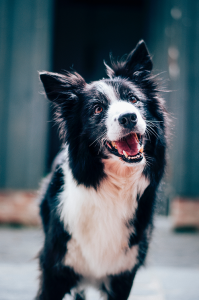What Is Your Dog Trying to Communicate?
 At Sit Means Sit, one of the most important aspects of our Lakewood dog training services is teaching pets and their owners to effectively communicate. How often do you find that your pup is trying to communicate with you but you simply aren’t sure what they want? How do improve your communication with your best friend? Start with body language!
At Sit Means Sit, one of the most important aspects of our Lakewood dog training services is teaching pets and their owners to effectively communicate. How often do you find that your pup is trying to communicate with you but you simply aren’t sure what they want? How do improve your communication with your best friend? Start with body language!
What to Watch For
We often encourage dog owners to simply pay a bit closer attention to their pup’s behavior. Oftentimes, their needs or concerns are right there on display, if you simply take the time to pick up on them. If your pup is displaying unwanted behaviors, they may very well be trying to communicate with you. By simply changing your behaviors a bit, you can often help your pup do the same.
Pay special attention to your dog’s tail, ears, head and back. This is where they will really communicate if they are feeling excited, happy, scared, emotional or even sad. If your pup is cowering, they are likely feeling scared or unsafe. If your dog’s ears, tail and head are perked up, they’re feeling dominant. You know your pup better than anyone else. Take the time to observe their behaviors and catalog their common mannerisms. Just like their human counterparts, dogs can change and evolve, but many of their core personality traits will remain consistent throughout their lifetime.
Sentiment
Your pup is susceptible to feeling the same emotions you are. From happiness and excitement to worry and stress; though they can’t voice their emotions, our pups are experiencing them none the less. Be cognizant of this. As you begin to understand your pup’s mannerisms a bit more, you will be able to react more effectively when they are feeling stressed or scared. And conversely, when your dog is excited and happy you can join in the fun.
Mannerisms
Happy/Playful – Tail perked up and wagging, ears alert and a lowered torso is a common stance for pups who are ready to play! Take this opportunity to do just that. Throw a ball, run around and enjoy this carefree time with your pup.
Dominant – Tail raised but not wagging, ridged legs, ears forward and teeth showing is a sign that your pup is feeling aggressive. Dogs typically display this when they are feeling challenged and have the need to be on the defense. If you notice your dog displaying this activity, observe their surroundings and figure out why they are feeling this way. Should you remove them from the situation?
Relaxed – Tail lowered, ears perked, head held high and mouth slightly open, is the sign that your pup is relaxed and alert. When displaying these characteristics, your dog is comfortable in their surroundings. You likely seem them with this posture when they are at home.
Stressed – Tail down, ears pulled back, torso lowered and panting are tell-tale signs that your dog is feeling stressed. When your pup is displaying this behavior, they are likely feeling unsure of their surroundings. If you see your dog acting stressed, it is best to get them out of the situation as quickly as possible.
Use these signs as a guide to know when your pup is ready to play and when they need some extra TLC. If you need help with training certain behavior such as holding place we have resources to help.
Lakewood Dog Training
At Sit Means Sit South Denver, we are proud to offer award winning dog training services in Lakewood and the surrounding areas. If you are interested in learning how we can help you more effectively communicate with your dog, we encourage you to contact us today! Schedule your free, no-obligation consultation, and discover the Sit Means Sit difference!
While you’re here, we also encourage you to connect with us on social media: Facebook, Twitter and Google+!
